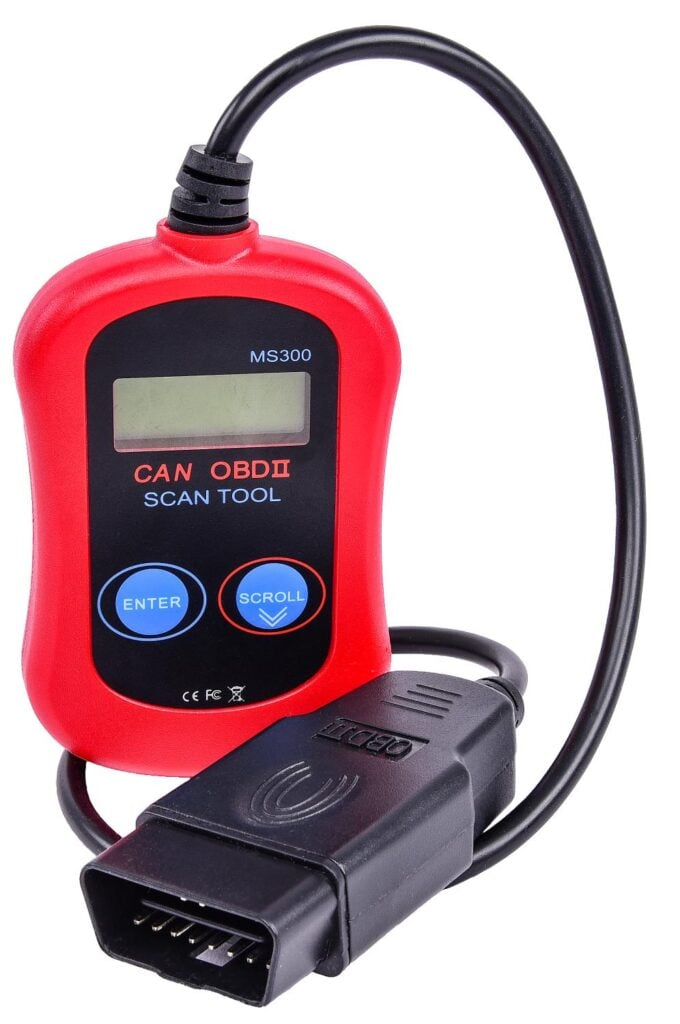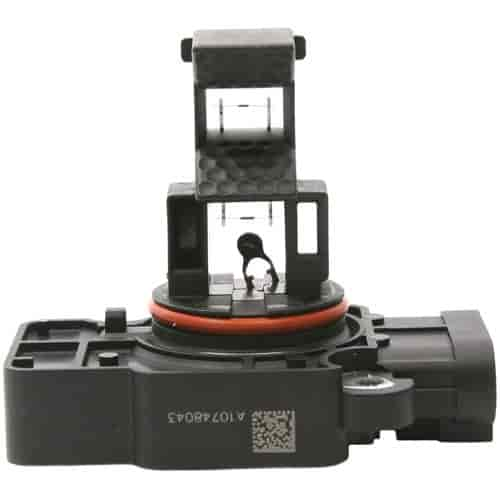
There's nothing worse than seeing a Check Engine Light appear on the dashboard. While it's a cause for panic, it doesn't have to be when you come prepared. Understanding what a Check Engine Light is trying to tell you is possible when you use an OBD-II scanner. Plugging one into your vehicle will provide you with an engine code.
If you've stumbled across the code P0113, you're in the right place. We'll take you through everything you need to know about this code, including how to diagnose and fix it.
What Is the P0113 Code and Symptoms?
The P0113 code is an engine code that will trigger a Check Engine Light. You can read the code with an OBD-II scanner and it refers to an issue with the intake air sensor (IAT), especially a problem with the circuit's resistance. In some vehicles, the intake air sensor will be built into the mass airflow sensor, so check with your vehicle's owner's manual to identify what sensor you're dealing with. That said, you're almost always dealing with a bad sensor when your engine produces this code.
The symptoms of a P0113 can vary based on your vehicle and how bad the damage is. One of the most common symptoms is an increase in fuel consumption. You'll be getting lower miles per gallon because an air intake problem can result in an imbalance of your vehicle's air-to-fuel ratio. In this case, your fuel system would have to dump more fuel into the cylinders for combustion, which would reduce fuel economy.
Another symptom that can reduce fuel efficiency and cause other problems is an issue with your spark plugs. In this case, they might have a black, gunky coating and a foul odor that smells like gasoline. As the problem progresses, your engine will struggle to start and you might have to turn the key a few times.
One of the worst symptoms you'll encounter with the P0113 code, which can result in additional engine codes, is a misfire. When your engine misfires combustion isn't happening properly because there isn't enough spark, compression, or fuel. If this happens consistently it can damage your pistons and other internal engine components.

How Serious Is the P0113 Code and What Are the Causes?
The P0113 code can damage your vehicle if you continue to drive with this code. It's serious because it can mess with your vehicle's running temperature, air-to-fuel ratio, and ignition system. Failing to address the code will result in misfires, trouble starting the engine, and several other severe problems.
When it comes to causes, there are a few possibilities:
- The most common cause of a P0113 is an issue with your vehicle's mass airflow sensor (MAF) or an intake air temperature (IAT). A P0113 code will trigger if you have issues with one or both of these sensors. When you're dealing with a sensor issue you'll need to replace the sensors when they're faulty.
- Another cause of the P0113 sensor is a dirty air filter. Most air filters can last for a year or two but they need to be replaced to avoid clogs, tears, and other problems. Even if you have an aftermarket air filter, like one from a cold air intake, it needs to be cleaned. Failing to do so can allow debris to enter your engine or it might trigger the P0113 engine code.
- You may notice corroded or damaged wires or wires that have been disconnected. Damage to these wires will trigger a code.
- A damaged power control module (PCM) may also result in a P0113 code.

Can I Still Drive with a P0113 Code On My Car?
Yes, you can still drive your car with a P0113 engine code, but that’s if you can get it to start. However, it's never a good idea to do so. Driving with a P0113 engine code can result in damage to your vehicle because you may have misfires. When your engine misfires, combustion isn't happening properly and that's terrible for internal components like the cylinder heads, pistons, and other fast-moving components.
It's also possible to experience a drop in fuel efficiency when you drive with a P0113 code, which also isn't great for your wallet. If you have to drive with a P0113 engine code, it's best to drive straight to a mechanic or your driveway to address and solve the problem.
How Can I Diagnose a P0113 Code?
There are a few ways to diagnose a P0113 engine code. However, you should always start by reading the code. To know if you have a P0113 engine code you can connect an OBD-II scanner to your vehicle's diagnostic link connector.
Once you read the code, you can begin diagnosing the problem. It's best to work with a technician if you're unsure about how to do so but the best place to start is the MAF or IAT sensors. You'll want to test these sensors and the components they're connected to to understand the root cause of the P0113 engine code.

How Difficult Is It to Inspect a P0113 Code?
Inspecting the P0113 engine code is challenging if you're not a mechanic but that doesn't mean it's impossible. Plus, most of the sensors you need to inspect are located externally, so you don't have to dig around too much.
The first step is to inspect the wires connected to the IAT sensor. If you notice any damage to these wires you can address the problem by connecting new ones. However, if the wires appear to be intact, it's important to clean the sensor and any connection to it. This might fix the problem or give you additional clues about the root cause of the problem. To be safe, you can also replace the IAT sensor and drive around for a few miles to see if the code comes back.
If the P0113 engine code comes back after you replace the sensor, it's time to inspect some other components. Start with the air filter because it's the most affordable component to replace. Once the new filter is installed, drive around for a few miles to see if the Check Engine Light turns off.
If you're still experiencing problems, you might have an issue with your mass airflow sensor or your vehicle's computer (PCM). Replacing the MAF sensor isn't too challenging but replacing a PCM is challenging and can be expensive.
From code readers and diagnostic equipment to the parts you need to fix your Check Engine Light on, JEGS is your one-stop shop.





